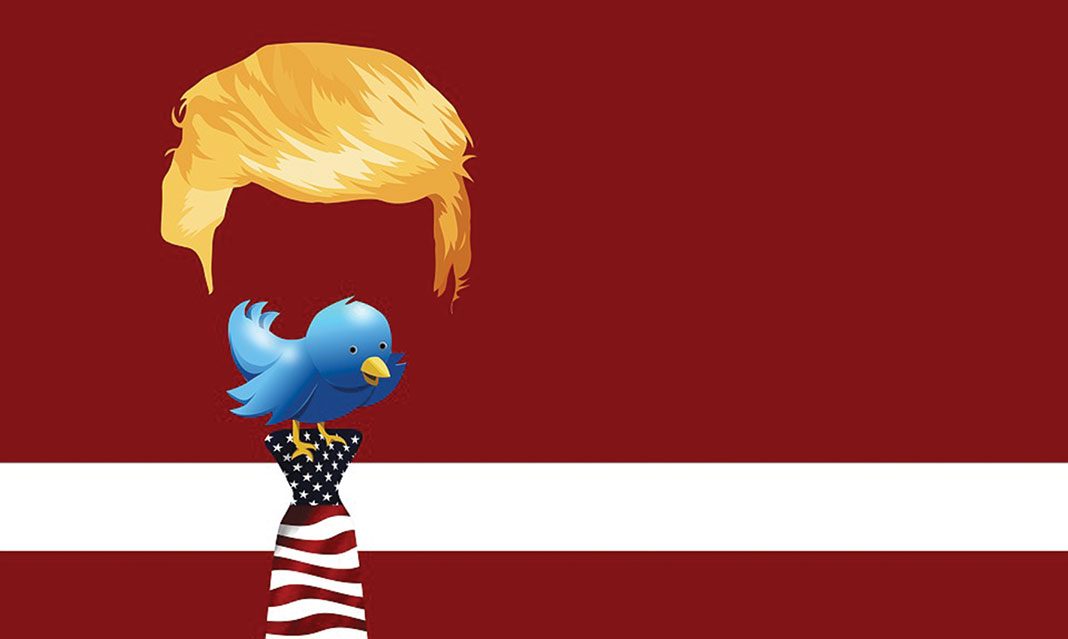Writer, historian, and former editor of The New York Times Book Review Sam Tanenhaus is a visiting professor at the University of Toronto St. George campus, and is currently teaching a course called “Trump and the Media.” Tanenhaus sat down with The Medium to discuss the course and his own background. Tanenhaus described how he and the students informally refer to the course as “Trump in real-time,” since the class analyzes the Trump presidency in real time, and the course constantly changes as events progress.
While the course has a syllabus and assigned readings, Tanenhaus describes how the unique style of the course allows it to change every week. Speaking about the students, he stated, “they do a lot of the talking.” Tanenhaus initially decided to teach the course in a traditional manner, however he realised quite early that the course could not work that way. He describes the immediacy of the course saying, “We’ll be looking at poll numbers that change an hour after class starts, and students would be looking at their laptops and shouting it out.”
Tanenhaus describes how the recent controversy over the Supreme Court nomination of Brett Kavanaugh had a considerable effect on the course. “We decided to show his statement live,” he said. Tanenhaus commented on the demographic of the course saying that out of 181 students, only 40 were male. After watching the live statement, they watched Dr. Ford’s statement and just opened it up for questions. The discussion was more relatable for students in a way. “At that point, it is not just about politics or U.S. politics, at all,” he said. It became a broader issue about culture that in some ways ties back to Trump.
Tanenhaus remarked that many people have expressed interest in the course, including both professors and students. While some of his students were concerned that they did not follow U.S. politics as closely as others, Tanenhaus told them not to worry about it, “we are just here to experience all this in real time.”
Tanenhaus went into detail about the first assignment for the course, called “Tweets like Trump.” He joked with his students on how, “This is the only time you will be penalized for spelling correctly.” According to Tanenhaus, students generally did a great job with it. Some of the assignments, he stated, were so great that they could have been tweets from Trump himself. The assignment was not so much about agreeing or disagreeing with Trump’s opinions, but rather about adapting his style of tweeting. “They just had to use some of the Trump techniques,” Tanenhaus explained.
He pointed out how the initial thoughts of many students regarding the course were that it would mainly consist of ridicule towards the president. Tanenhaus highlights that it is more than that. As a journalist, he is always interested in looking at continuity and changes, and how events like Trump’s election take place. While Trump’s election may seem bewildering to Canadians, Tanenhaus pointed out the significance of the 63 million votes that Trump received, and how that number reflects a population much larger than the whole population of Canada. Clearly it is relevant to understand how such a phenomenon occurred and what factors led up to it.
During the initial lectures, Tanenhaus asked his students how many of them were from the U.S., and several of them raised their hands. He then asked how many of them knew someone who had voted for Trump, or had family that supported Trump, and a large number of students answered affirmative. Tanenhaus told them, “This classroom is more diverse than the newsroom of The New York Times.” Had Tanenhaus asked this question there, he would not have gotten more than five hands.
Turning to Tanenhaus’ own background, he remarked how he initially wanted to become a university professor, after completing a graduate degree in English literature from Yale University. However, he very soon realized that that was not something he wanted to do, and instead shifted his focus to non-fiction and journalistic writing.
Tanenhaus remarked how the flexibility of the field of journalism meant that journalists were not constrained in a particular field of study. “I know very few journalists who went to journalism school,” he said. Journalism is not like other fields, he contended, as it does not require a licence or passing an exam. “It’s about listening and observing, and going from beat to beat,” he said. He offered advice for students aspiring to be journalists, “If you find other people’s opinions more interesting than your own, then journalism is a good place to go.”
While Tanenhaus has hosted guest lectures at several universities including Harvard and Yale, he has not taught a course specifically like this before. Tanenhaus offered high praise for the students in his class. “The students here are just great. They are super smart, highly interested, they are extremely civil towards one another and respectful of me,” he described. While difference of opinion is a common occurrence for the course, there are no confrontations or escalations.
Tanenhaus noted the differences between Canada and the U.S., stating that he sees more optimism in Canada. While he is careful not to overgeneralize, Tanenhaus thinks that Canada is without the tense environment hanging over the U.S.. He also cites the smaller population of Canada as a factor in higher safety levels.
Tanenhaus highlights the importance of a course like “Trump in the Media” as it reveals how significant it is that we are experiencing events that will go down in history as drastically altering the world as a whole.



